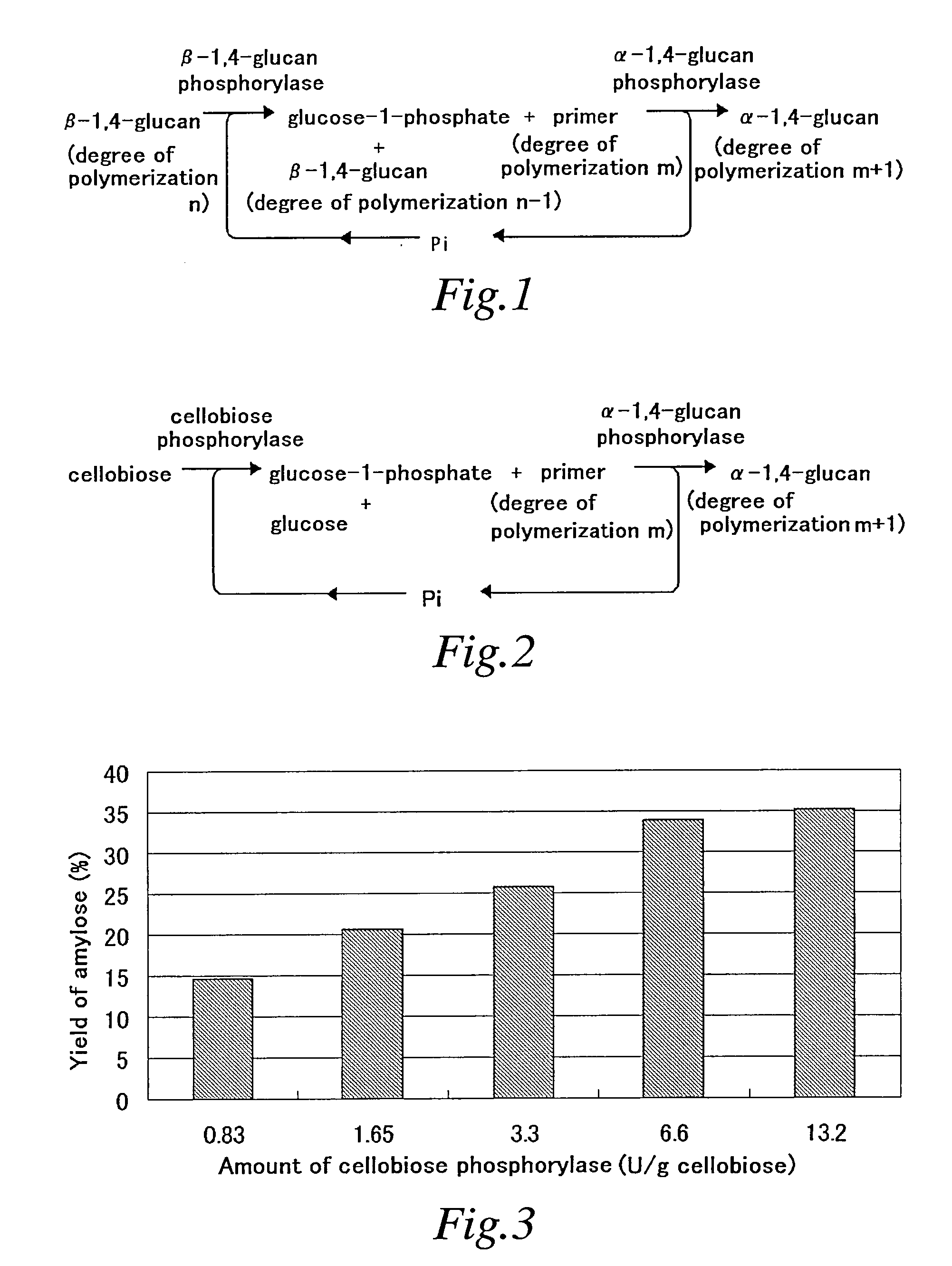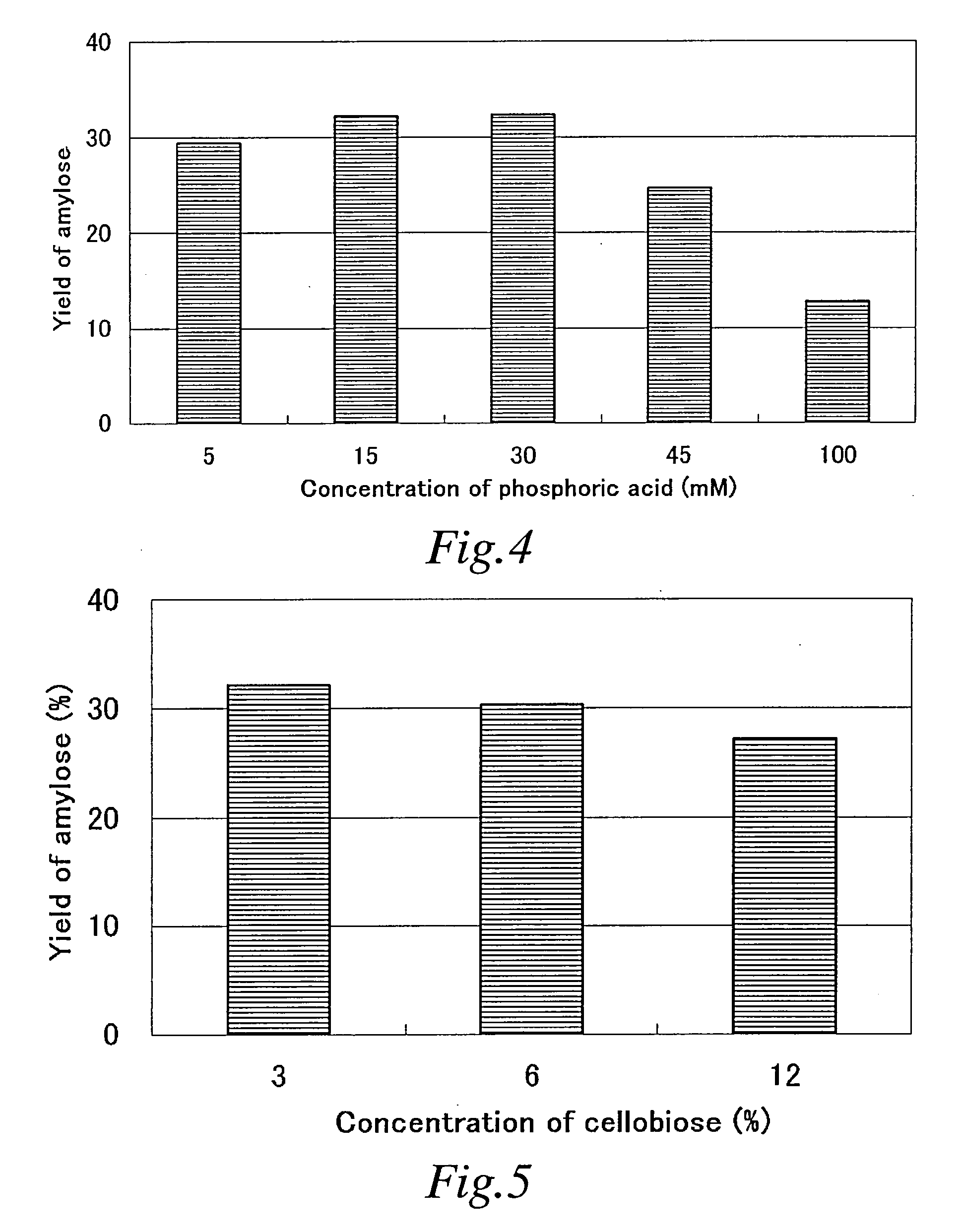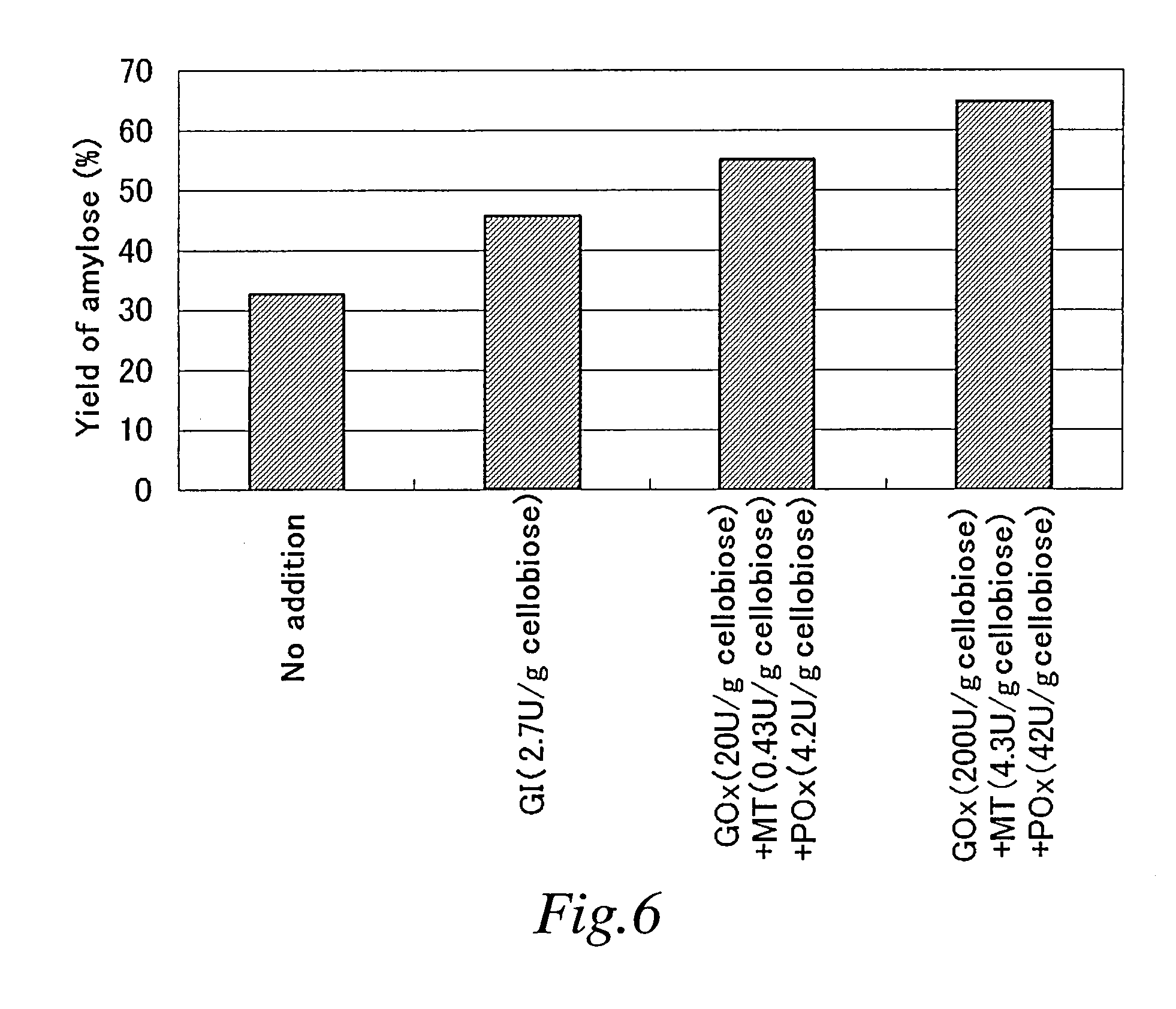Method of converting beta-1,4-glucan to alpha-glucan
a technology of alpha-glucan and beta-glucan, which is applied in the field of methods to produce glucan from 1, 4glucan, can solve the problems that -glucans cannot be utilized for solving food crisis problems, human beings cannot utilize -glucans as energy sources, and -glucans cannot be efficiently converted into digestible food, etc., to achieve the effect of non-digestible and efficient conversion
- Summary
- Abstract
- Description
- Claims
- Application Information
AI Technical Summary
Benefits of technology
Problems solved by technology
Method used
Image
Examples
example 1
[0265] The present invention will be explained in more detail below by way of the following Examples. The present invention is not limited to the following Examples.
[0266] (1. Measuring Method and Calculating Method)
[0267] The activities of various enzymes in the present invention and the yield of the resulting α-glucan were measured by the following measuring method.
[0268] (1.1 A Method for Measuring Activity of Cellobiose Phosphorylase)
[0269] 30 μl of a 40 mM aqueous cellobiose solution and 30 μl of a 40 mM aqueous sodium phosphate solution (pH 7.5) are mixed, 60 μl of an appropriately diluted enzyme solution (sample) is further added, and reaction is initiated in 120 μl of the mixture. After this mixture is incubated at 37° C. for 10 minutes in order for the reaction to proceed, the mixture is retained at 100° C. for 10 minutes to inactivate the enzyme. Subsequently, 780 μl of a 1M Tris-HCl buffer (pH 7.0) and 120 μl of a coloring reagent (glucose AR-II coloring reagent (manu...
examples 1-1 to 1-6
Synthesis of Amylose at Various Concentrations of Primer
[0291] Using reaction mixtures having the compositions (at reaction initiation) shown in the following Table 1, incubation was performed at 45° C. over 16 hours to synthesize amylose. amylose is desired to be synthesized, the primer may be used at a smaller amount and, when low molecular weight amylose is desired to be synthesized, the primer may be used at a larger amount.
examples 2-1 to 2-5
Synthesis of Amylose at Various Concentrations of Cellobiose Phosphorylase
[0292] Using reaction mixtures having the compositions (at reaction initiation) shown in the following Table 2, incubation was performed at 45° C. over 16 hours to synthesize amylose.
TABLE 2CompositionWeightConcentrationConcentrationConcentrationConcentrationConcentrationaverageof CBPof cellobioseof phosphoricof GP (U / gof primer (G4*1)molecularYieldNo.(U / g cellobiose)(%)acid*2 (mM)cellobiose)(μM)weight(%)Example0.83330507583,60014.72-1Example1.65330507591,08020.72-2Example3.303305075111,20025.72-3Example6.603305075129,90033.82-4Example13.203305075144,90035.22-5
*1G4: maltotetraose
*2Phosphoric acid was added as a potassium dihydrogen phosphate-disodium hydrogen phosphate buffer. The pH of the phosphate buffer is 7.0.
[0293] After reaction, the weight average molecular weights and the yields of synthesized amyloses were determined according to the aforementioned 1.3 and 1.4. Results are shown in Table 2 and F...
PUM
| Property | Measurement | Unit |
|---|---|---|
| molar concentration | aaaaa | aaaaa |
| molar concentration | aaaaa | aaaaa |
| molar concentration | aaaaa | aaaaa |
Abstract
Description
Claims
Application Information
 Login to View More
Login to View More - R&D
- Intellectual Property
- Life Sciences
- Materials
- Tech Scout
- Unparalleled Data Quality
- Higher Quality Content
- 60% Fewer Hallucinations
Browse by: Latest US Patents, China's latest patents, Technical Efficacy Thesaurus, Application Domain, Technology Topic, Popular Technical Reports.
© 2025 PatSnap. All rights reserved.Legal|Privacy policy|Modern Slavery Act Transparency Statement|Sitemap|About US| Contact US: help@patsnap.com



